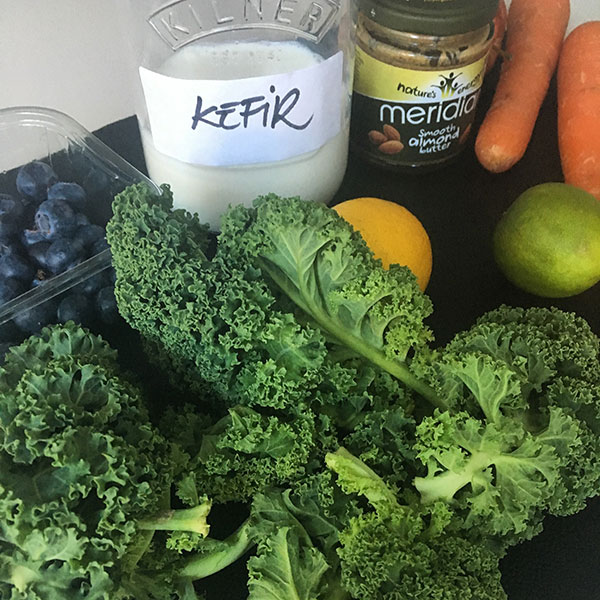
Fermented foods contain bucketfulls of the helpful bacteria known as probiotics which help maintain the balance in our intestinal flora which in turn supports our intestinal health as we discussed on the blog on September 24.
But why is intestinal health so important? Well, because a happy gut can help keep your whole body in check, here is how:
Your gut flora protects health “from the inside” crowding out pathogens, producing lactic acid which inhibits their growth and secretory IgA which neutralises viruses and bacteria before enter the bloodstream.
If keeping infection at bay wasn’t enough, our intestinal flora also helps prevent constipation by increasing the peristaltic movements that help move stools along our colon. In addition, research indicate that butyrate, a substance produced by our intestinal flora, may protect against colon cancer.
Recent research in animals indicate that lactic acid producing bacteria such as lactobacilli and bifidobacteria helps obese animals lose weight.
The relationship between good levels of lactic acid producing bacteria (LAB) and weight control in humans has not been fully explored in humans, although many studies have found evidence of the relationship between beneficial bacteria and lower weight or weight loss. I will review newly published research in the new year and update this article but in the meanwhile…why not start including fermented foods in your diet? Here is why…
Lactic acid producing bacteria (LAB) such as lactobacilli and bifidobacteria are found in abundance in fermented foods such as:
LASSI, an Indian drink made with yogurt, water, spices and fruit. Lassi not only contains good bacteria but also calcium to help build strong bones. As the milk sugars in yogurt are fermented to lactic acid those intolerant to lactose can tolerate lassi much better than unfermented yogurt drinks.
Mix 200ml of yogurt with 200ml of cold water, ½ teaspoon powdered cardamom seeds and 100g peeled mango chopped into medium pieces. Whizz in a blender until well mixed and frothy. Serve very cold.
KEFIR, a drink popular in Bulgaria, made with kefir grains soaked for several hours in dairy or non-dairy milk or water. The microorganisms found in kefir metabolize lactose and convert it to lactic acid, so it can even be enjoyed by those intolerant to lactose. Kefir grains can be found online or in good health food stores.
SOY SAUCE is produced by fermenting soybeans with fungi such as Aspergillus oryzae or Aspergillus sojae. As soy sauce contains some wheat, tamari (Japanese wheat-free soy sauce) is the best choice for those suffering from coeliac disease or intolerant to wheat. Soy sauce is quite high in salt so consume it in moderation, especially if you suffer from hypertension. Children should also consume it in small quantities and, if possible, choose a low-salt version.
Fry a couple of crushed garlic cloves, a 2cm piece of grated ginger and ½ chilli seeded and cut into thin strips in a tablespoon of rapeseed oil over a medium heat. Once the garlic turns golden, add 200g of broccoli and fry, stirring continuously, for 1 minute. Add 2 tablespoons of water and cook over medium heat, covered, until the water is absorbed. Add more water as many times as needed (about 3 times) until the broccoli is al dente. Sprinkle with toasted sesame seeds, add a dash of soy sauce or tamari and serve immediately!
FISH SAUCE used in both Thai food is made from fish fermented in salted water. This sauce is used in Asian dishes like Vietnamese Pho – here is our recipe.
Korean KIMCHI seasoning made with radishes, onions or cucumbers fermented in water with salt and spices.
KOMBUCHA TEA is fermented by adding a culture containing symbiotic fungi and bacteria to sweetened tea.
Japanese MISO paste is made by fermenting soybeans with the help of a fungus known as Aspergillus oryzae and sometimes adding some rice or barley. Note that miso is quite high in sodium so, consume in moderation especially if you suffer from hypertension. Miso contains vitamin K which helps bone formation and vitamin B3 which is necessary for the metabolism of food. Miso also contains iron, which is needed to produce red blood cells, and magnesium to help us relax.
Prepare a vegetable soup and the end of cooking, add a tablespoon of miso paste and mix well without boiling the soup again to avoid killing the probiotic bacteria. You can add some cooked and cooled brown rice noodles and a little soy sauce. To ensure this meal is balanced, shred some cooked chicken on top, add some cooked prawns of a good handful of silken tofu.
SAUERKRAUT is caggabe that has been fermented by bacteria that produce lactic acid, which gives it its characteristic taste and also preserves it. Sauerkraut is high in soluble fibre, that feeds the probiotic bacteria in the colon, and insoluble fibre to prevent constipation. Sauerkraut also contains good levels of vitamin C that helps keep the immune system in good shape.
Fermented soybean paste or TEMPEH from Indonesia is a solid product similar to a veggie burger patty. Tempeh is high in protein and fibre and also provides necessary for energy and minerals like calcium to maintain strong bones iron to produce red blood cells and magnesium to help us relax.